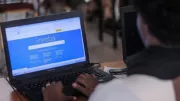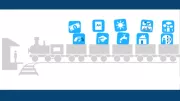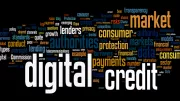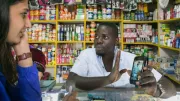Recent Blogs
Blog
What Does the Future Hold for Youth Savings in Ethiopia?
Over the past five years, PEACE MFI S.CO's Lenege youth savings product has increased access to savings for low-income youth in Ethiopia. What can other financial service providers learn from its experience?Blog
Four Drivers of Change for Financial Inclusion in 2017
In an open letter, CGAP CEO Greta Bull posits that four key factors are changing the landscape of financial inclusion: (1) Technology and distribution; (2) Policy and regulation; (3) Open ecosystems; and (4) Data.Blog
Leveraging Complaint Data for Greater Consumer Protection
Complaints are stories shared by unhappy customers looking to release anger, seek compensation, or improve service. For financial supervisors in many markets, complaint data collection presents a challenge. Here's how complaint reports can be improved to support effective supervisory action.Blog
A Public-Private Partnership to Digitize Bus Fares in Rwanda
Digitizing high-frequency or high-volume payment flows–especially to and from government–can support the growth of a national payments ecosystem and progress towards universal financial inclusion. In Rwanda, several initiatives are developing technology-enabled delivery of government services and digitization of corresponding payments.Blog
Digital P2G Initiatives: 5 Best Practices for Financial Inclusion
Person-to-government (P2G) payments receive considerably less attention from the global financial inclusion community than payments such as person-to-person or government-to-person. A new report aims to address this gap and to provide a roadmap for future P2G payment digitization efforts.Blog
Interoperability: More Than a Technological Challenge
For most practitioners, interoperability brings to mind the technical tools that allow modern payment systems to work together. CGAP’s new global scan on digital financial services interoperability makes it clear that exchanging payments is about much more than technical connections.Blog
Sowing Opportunities and Growing Possibilities in Paraguay
In Paraguay, a partnership between Fundación Capital and the government of Paraguay offers a compelling example of how the Graduation Approach can be integrated into public policy to halt extreme poverty.Blog
Cash or Cow? Weighing Monetary vs. In-Kind Asset Transfer
As Graduation Approaches have spread and scaled, so too have the discussions of the best approaches. Fundación Capital believes that programs should focus on in-cash rather than in-kind asset transfers. Why? Read more about the case for cash.Blog
New Trends in Global Funding for Financial Inclusion
What direction is funding for financial inclusion headed? The results are in from the annual CGAP and MIX Cross-Border Funder Survey.Blog
Women’s Financial Inclusion: A Down Payment on Achieving the SDGs
Ensuring that women have access to formal financial services can help to address many of the economic gaps between men and women worldwide. World Bank Group's Gender Strategy puts women’s economic empowerment—and the financial services necessary to achieve it—high on the agenda.Blog
Can a G2P Payment Connection Trigger Tax and Energy Reforms?
Governments are increasingly using payments and identity technology to shift cash-based transfer payments into digital channels. A new Centre for Global Development paper argues that exploiting the full range of policy levers enabled by these technologies can improve public service delivery and reduce poverty.Blog
Accessible, Robust, Integrated: Identifying Good Payment Programs
An estimated 718 million recipients in developing economies are enrolled in cash transfer programs, more of which are going digital. This has not necessarily equaled greater financial inclusion. ISPA's Social Protection Payment Delivery Tool looks to make digital transfer programs more inclusive.Blog
Microfinance in India Growing Fast Again: Should We Be Concerned?
The rapid growth of microfinance in India today is creating new challenges for a sector hugely impacted by the 2010 crisis. The recently released Inclusive Finance India Report 2016 outlines these challenges and suggests that they should be addressed soon.Blog
Riding the “Rails”: Unlocking Innovation with Open APIs
What are "Open APIs" and why do they matter for financial inclusion? CGAP is looking at open APIs as an enabler of increased innovation in digital financial services. Here's what digital payments providers need to know.Blog
3 Steps Policy-Makers Can Take Now on Digital Credit
In emerging markets, policy-makers have often struggled to keep pace with the rapid growth of digital credit. With the establishment of consumer protection authorities unlikely in the short term, here are three steps policy-makers can take now to protect consumers.Blog
Financial Inclusion Can Reduce Inequality and Bring Peace
Global inequality is on the rise, and it is contributing to growing disenchantment and conflict. There is an opportunity for financial inclusion to address these challenges and to make a difference in fragile and conflict-affected states.Blog
Liberian Teacher ePayments: Stepping Stones to Inclusion
What if a teacher in rural Liberia could collect her salary instantly and remotely? USAID recently partnered with the Liberian Ministry of Education to roll out the first mobile salary payments, and the preliminary results are extremely promising.Blog
How a Retail Chain Became Mexico’s No. 1 Bank Account Supplier
Saldazo, a Visa debit card product co-branded with Banamex bank, has made Mexico’s largest corner store retail chain – OXXO – the country’s number one transactional account supplier. Here are some key success factors, challenges and insights from this project.Blog
Swiping Right: Ideo.org Prototypes Mobile Money on Smartphones
IDEO.org believes new smartphone technology and human-centered interaction design of mobile-money apps can go a long way to solve problems and open up new doors, especially for low-income people. Here are key lessons from their recent financial health work in design-led prototyping.Blog




















